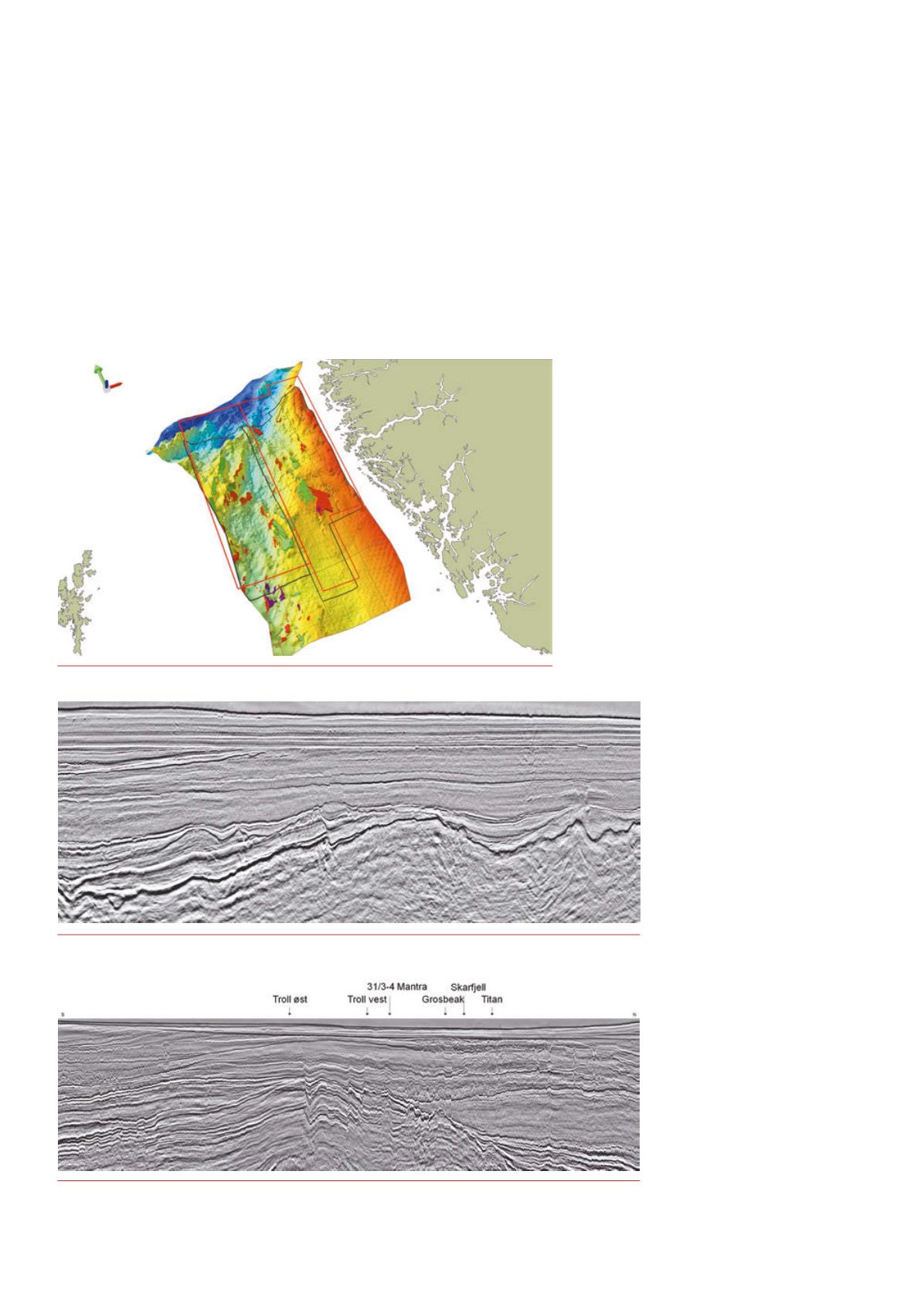
12 |
Oilfield Technology
June
2015
Weaker oil prices could drive necessary readjustments, which will
strengthen the industry over the long term. There is still strong interest
in development and activity remains high as four new fields came on
stream in 2014 and 22 new discoveries were made. New wells produced
more than expected last year and oil production increased for the first
time since 2000, reaching 87.8 million Sm
3
, 3% higher than last year,
according to the Norwegian Petroleum Directorate.
Multi‑client surveys provide a cost‑effectivemeans of acquiring
high‑quality data, as costs can be shared and larger surveys acquired
for a better overall view of the prospect than is generally the case
with proprietary surveys. Even in relativelymature basins such as the
North Sea, where acreage is shared bymany operators, multi‑client
surveys can be a cost‑efficient tool for use as an aid to development.
Access to large surveys inmature and virgin areas allows oil companies
to reduce their exploration risk at an earlier stage and also help to reduce
the time required from license award to drilling wells in new licenses.
Postage‑stamp‑size surveys often leave holes in the data coverage,
are inefficient due to the disproportionate time spent on turns, and
have different acquisition parameters and azimuths, making regional
explorationmore challenging. Large continuous and consistent
surveys are cost‑efficient to acquire and therefore contribute to the oil
companies’ cost‑cutting objectives and help to reduce total exploration
spending by drilling wells with better de‑risking.
In addition to simple seismic data packages, new programmes,
such as themulti‑client one CGG is currently acquiring over the
Horda Platform (Figure 1), can deliver an integrated geoscience package
including geological context, potential fields, satellite imagery, a
high‑quality well package, a prospectivity review, seismic reservoir
characterisation and biostratigraphy, sedimentology and geochemical
data, all in addition to reservoir‑quality seismic data. These value‑added
products can help to identify and support drill locations, and so improve
recovery and reduce costs. Provision of all these products by a single
integrated geoscience company, with expertise in all
the geological and geophysical disciplines, can not only
shorten decision times, but the knowledge of how each
item fits into the broader workflow ensures that each
item is of higher value. This means that a better‑quality
product is delivered, even to those clients who only
wish to purchase a single itemor service. The goal is
to reduce the time spent by clients to condition and
integrate the data and allowmore time to be spent on
the generation of new play models and identification of
new prospects, or to improve production fromexisting
reservoirs.
The Horda programme is being acquired in
two stages: the initial Horda survey launched in 2014
is still ongoing and will cover 18 000 km
2
, while the
adjacent Tampen survey, which began in April this year,
will cover an additional 17 000 km
2
. The two surveys
will bemerged in the future to forma contiguous data
volume, providing the oil industry with
a unique and continuous BroadSeis™
and BroadSource™ dataset over
more than 35 000 km
2
of one of the
most prolific basins in the world. The
two surveys will cover the huge Troll
gas and oilfield and giant oilfields
such as Statfjord, Gullfaks, Snorre and
Oseberg that have been in production
for decades, in addition to several
smaller oil and gas fields such as Gjøa,
Fram, Vega and the recent Skarfjell
and Grosbeak discoveries. These
recent discoveries are demonstrating
the future exploration potential in
this region and CGG expects new
data to provide the ground for new
play concepts. Themain challenges,
in addition to themapping and
delineation of the Upper Jurassic
sandstone and erosional remnants of
Jurassic sandstones, are the complex
petroleummigration systemand late
westward tilting of the entire region,
resulting in remigration of oil and gas
and the formation of new traps and
leakage fromothers. Remigration of
gas is a very rapid process, whilst oil
remigration requires millions of years
Figure 1.
Top Jurassic and outline of theHordaand Tampen surveys.
Figure 2.
Example of BroadSeis fast‑track data showing the fine detail achievable in this area from
full‑bandwidth data (image courtesy of CGGData Library).
Figure 3.
Regional line through themajor fields in the area extracted fromthe fast‑track
BroadSeis‑BroadSource data (courtesy of CGGData Library).


